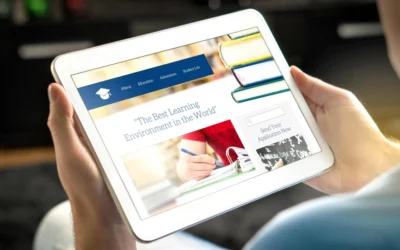Written by
- The purpose of education – and public education specifically – has morphed over time.
- We have the chance to define the purpose of public education in 2025, and it ought to help students reach their God-given potential by serving parents as they seek to guide their children’s education.

Chalk it up to the COVID-19 pandemic, culture wars, or President Trump’s bold changes in office, but a lot has been changing in education policy.
It gives us pause to ask the question: What is the purpose of public education in 2025 anyway?
What’s been the intended purpose of public education in the past?
It’s a question that’s been hard to answer for a long time, not just this year. Colonial education before public schools, as we know them, was about instilling religious beliefs in children, something that parents primarily taught or paid for directly.
The Founders clearly believed the purpose of education had a civics mission. They believed in the promulgation of knowledge and preserving the republic.
Early proponents of common schools and the eventual public schools might have argued that the primary purposes of these early formal schools were to instill values of American citizenship and alleviate poverty.
Since then, public education has taken on other purposes, including preparing students for college and careers, or national security, or reading and writing proficiency over other emphases.
Today, many thinkers and advocates believe that public schools serve one or more purposes: teaching the basics, such as reading and writing, developing moral character, creating productive citizens, overcoming injustices, enabling individuals to serve others, providing students with job preparation, and promoting economic development for society.
Furthermore, the word “public” complicates things. We’ve moved away from public education, meaning literally public schools. Today, we have online schools funded by public dollars, and we are having an ongoing discussion about public funds being spent by families to educate their children through private schools or vendors. Perhaps these derivatives reveal that we believe public education is merely a commitment to ensuring kids are educated while being agnostic as to how.
What should be the purpose of public education today?
The perceived failures of public education may be helpful hints as to what we believe the purpose ought to be.
For instance, it’s easy to list what’s not going well in public education: low proficiency in math and reading over decades, widening performance gaps, unsafe schools, and controversies over what’s being taught in schools.
What’s trickier is identifying what it looks like when it’s working right. So, what should be the purpose of public education today?
It starts with what was described in Sutherland Institute’s Education Vision published years ago: “Human beings are magnificent. We were born with a God-given ability to learn and the capacity to grow. As Aristotle put it, ‘All men by nature desire to know.’ Education is broader than any one school system.”
While the current public education system should be aimed toward this aspiration for students, a primary purpose is to help parents guide their children’s education.
Specifically, this means that public education is one of many choices that parents can access. Furthermore, the institution of public education also requires a clear parental role and set of responsibilities in order to function properly, and parents’ rights do not end at the public school doors.
As parents’ rights issues continue into the national consciousness, public controversies, and lawfare (as was the case with the recent SCOTUS ruling in Mahmoud v. Taylor), it suggests this purpose has atrophied over time and is need of being restored.
Sutherland Institute has attempted to elevate the “parent-teacher relationship” in an effort to restore this parent-focused purpose. Our promotion of public policies such as parent access to curriculum, reasonable accommodations for students and parents, increased transparency of financial and other data, and functional public or private education choices is aimed at addressing this.
In 2025, we have a real opportunity to determine the purpose of public education. While the aim is to help students reach their God-given potential, the purpose of education is to serve parents as they seek to do this for their children. Our public policies ought to reflect this.

Insights: analysis, research, and informed commentary from Sutherland experts. For elected officials and public policy professionals.

- The purpose of education – and public education specifically – has morphed over time.
- We have the chance to define the purpose of public education in 2025, and it ought to help students reach their God-given potential by serving parents as they seek to guide their children’s education.
Read More
Is Trump’s DOJ pushing for a dangerous overreach? | Matt Germer and Derek Monson
The DOJ says it’s enforcing federal election laws. Critics call it a dangerous overreach that could erode privacy and weaken security.
Welcome to college: A letter for the journey ahead
Starting college is more than academics – it’s a chance to grow in character, build lifelong relationships, engage with diverse perspectives, and prepare for a life of wisdom, service, and civic leadership in a polarized world.
More districts earn Partners in Learning certificates by improving their website
This initiative supports parental rights and educational transparency, aligning with national efforts to empower families in public education.
Connect with Sutherland Institute
Join Our Donor Network
Follow Us
The post What’s the purpose of public education in 2025? appeared first on Sutherland Institute.















